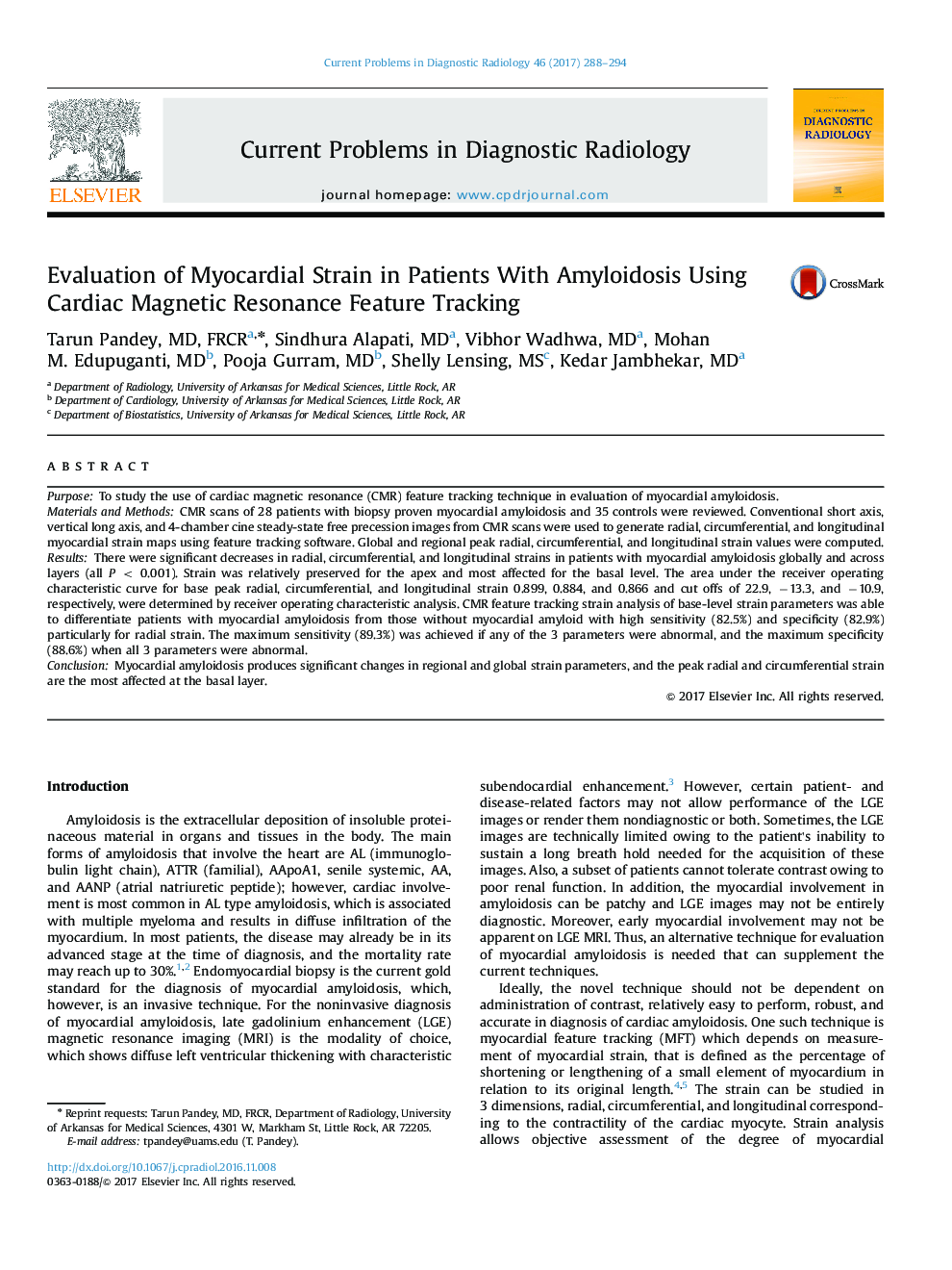| Article ID | Journal | Published Year | Pages | File Type |
|---|---|---|---|---|
| 5725892 | Current Problems in Diagnostic Radiology | 2017 | 7 Pages |
PurposeTo study the use of cardiac magnetic resonance (CMR) feature tracking technique in evaluation of myocardial amyloidosis.Materials and MethodsCMR scans of 28 patients with biopsy proven myocardial amyloidosis and 35 controls were reviewed. Conventional short axis, vertical long axis, and 4-chamber cine steady-state free precession images from CMR scans were used to generate radial, circumferential, and longitudinal myocardial strain maps using feature tracking software. Global and regional peak radial, circumferential, and longitudinal strain values were computed.ResultsThere were significant decreases in radial, circumferential, and longitudinal strains in patients with myocardial amyloidosis globally and across layers (all P < 0.001). Strain was relatively preserved for the apex and most affected for the basal level. The area under the receiver operating characteristic curve for base peak radial, circumferential, and longitudinal strain 0.899, 0.884, and 0.866 and cut offs of 22.9, â13.3, and â10.9, respectively, were determined by receiver operating characteristic analysis. CMR feature tracking strain analysis of base-level strain parameters was able to differentiate patients with myocardial amyloidosis from those without myocardial amyloid with high sensitivity (82.5%) and specificity (82.9%) particularly for radial strain. The maximum sensitivity (89.3%) was achieved if any of the 3 parameters were abnormal, and the maximum specificity (88.6%) when all 3 parameters were abnormal.ConclusionMyocardial amyloidosis produces significant changes in regional and global strain parameters, and the peak radial and circumferential strain are the most affected at the basal layer.
